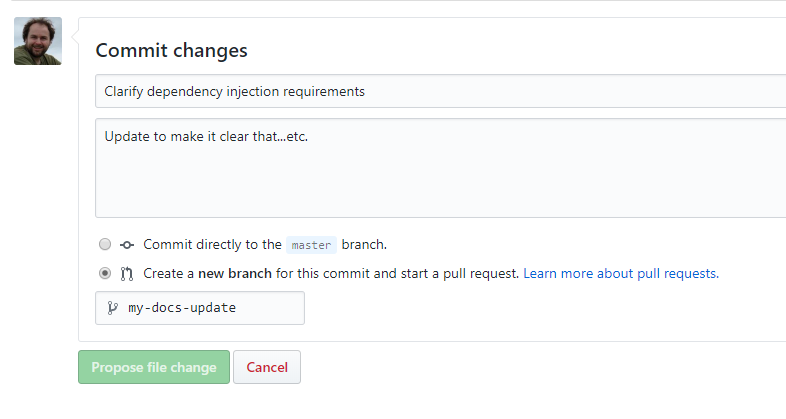In the sample projects, the Models.cs class contains the context and the classes all in one file. While I can add a new class (e.g., "User") and add it to the context in this file and create a successful migration (both adding and applying), if I attempt the same operation where the class (my "User") as a separate file ("UserModel.cs"), the migration gets created, but the migration apply fails. I get an error (stack trace is below) that says sqlite cannot support this migration operation. However, in VSCode, when I go to look at the code after the migration add step, I have a different issue: it says (I called it "FirstMigration), "FirstMigration does not implement inherited abstract member 'Migration.id.get' [dnx451, dnxcore50]..." Now, I attempt to implement that, but it later says that it already exists. And if I look in the .Designer, sure enough, there's an Id that's defined. As far as I can tell, the file is the same as the other ones where there was a successful migration add and apply.
Here's the stack trace.
System.NotSupportedException: SQLite cannot support this migration operation.
at Microsoft.Data.Entity.Sqlite.Migrations.SqliteMigrationSqlGenerator.Generate (Microsoft.Data.Entity.Migrations.Operations.AlterColumnOperation operation, IModel model, Microsoft.Data.Entity.Infrastructure.SqlBatchBuilder builder) [0x00000] in <filename unknown>:0
at (wrapper dynamic-method) object:CallSite.Target (System.Runtime.CompilerServices.Closure,System.Runtime.CompilerServices.CallSite,object,object,Microsoft.Data.Entity.Metadata.IModel,Microsoft.Data.Entity.Infrastructure.SqlBatchBuilder)
at System.Dynamic.UpdateDelegates.UpdateAndExecuteVoid4[Object,Object,IModel,SqlBatchBuilder] (System.Runtime.CompilerServices.CallSite site, System.Object arg0, System.Object arg1, IModel arg2, Microsoft.Data.Entity.Infrastructure.SqlBatchBuilder arg3) [0x00000] in <filename unknown>:0
at (wrapper delegate-invoke) System.Action`5<System.Runtime.CompilerServices.CallSite, object, object, Microsoft.Data.Entity.Metadata.IModel, Microsoft.Data.Entity.Infrastructure.SqlBatchBuilder>:invoke_void_T1_T2_T3_T4_T5 (System.Runtime.CompilerServices.CallSite,object,object,Microsoft.Data.Entity.Metadata.IModel,Microsoft.Data.Entity.Infrastructure.SqlBatchBuilder)
at (wrapper dynamic-method) object:CallSite.Target (System.Runtime.CompilerServices.Closure,System.Runtime.CompilerServices.CallSite,object,object,Microsoft.Data.Entity.Metadata.IModel,Microsoft.Data.Entity.Infrastructure.SqlBatchBuilder)
at Microsoft.Data.Entity.Migrations.Sql.MigrationSqlGenerator.Generate (IReadOnlyList`1 operations, IModel model) [0x00000] in <filename unknown>:0
at Microsoft.Data.Entity.Migrations.Migrator.ApplyMigration (Microsoft.Data.Entity.Migrations.Migration migration) [0x00000] in <filename unknown>:0
at Microsoft.Data.Entity.Migrations.Migrator.ApplyMigrations (System.String targetMigration) [0x00000] in <filename unknown>:0
at Microsoft.Data.Entity.Commands.MigrationTool.ApplyMigration (System.String migrationName, System.String contextTypeName, System.String startupAssemblyName) [0x00000] in <filename unknown>:0
at Microsoft.Data.Entity.Commands.Program+<>c__DisplayClass13_0.<ApplyMigration>b__0 () [0x00000] in <filename unknown>:0
at Microsoft.Data.Entity.Commands.Program.Execute (System.String startupProject, System.Func`1 invoke) [0x00000] in <filename unknown>:0
at Microsoft.Data.Entity.Commands.Program.ApplyMigration (System.String migration, System.String context, System.String startupProject) [0x00000] in <filename unknown>:0
at Microsoft.Data.Entity.Commands.Program+<>c__DisplayClass10_3.<Main>b__9 () [0x00000] in <filename unknown>:0
at Microsoft.Framework.Runtime.Common.CommandLine.CommandLineApplication.Execute (System.String[] args) [0x00000] in <filename unknown>:0
at Microsoft.Data.Entity.Commands.Program.Main (System.String[] args) [0x00000] in <filename unknown>:0
at (wrapper managed-to-native) System.Reflection.MonoMethod:InternalInvoke (System.Reflection.MonoMethod,object,object[],System.Exception&)
at System.Reflection.MonoMethod.Invoke (System.Object obj, BindingFlags invokeAttr, System.Reflection.Binder binder, System.Object[] parameters, System.Globalization.CultureInfo culture) [0x00000] in <filename unknown>:0
--- End of stack trace from previous location where exception was thrown ---
at System.Runtime.ExceptionServices.ExceptionDispatchInfo.Throw () [0x00000] in <filename unknown>:0
at Microsoft.Framework.Runtime.Common.EntryPointExecutor.Execute (System.Reflection.Assembly assembly, System.String[] args, IServiceProvider serviceProvider) [0x00000] in <filename unknown>:0
at Microsoft.Framework.ApplicationHost.Program.ExecuteMain (Microsoft.Framework.Runtime.DefaultHost host, System.String applicationName, System.String[] args) [0x00000] in <filename unknown>:0
at Microsoft.Framework.ApplicationHost.Program.Main (System.String[] args) [0x00000] in <filename unknown>:0
--- End of stack trace from previous location where exception was thrown ---
at System.Runtime.ExceptionServices.ExceptionDispatchInfo.Throw () [0x00000] in <filename unknown>:0
at Microsoft.Framework.Runtime.Common.EntryPointExecutor.Execute (System.Reflection.Assembly assembly, System.String[] args, IServiceProvider serviceProvider) [0x00000] in <filename unknown>:0
at dnx.host.Bootstrapper.RunAsync (System.Collections.Generic.List`1 args, IRuntimeEnvironment env, System.Runtime.Versioning.FrameworkName targetFramework) [0x00000] in <filename unknown>:0





